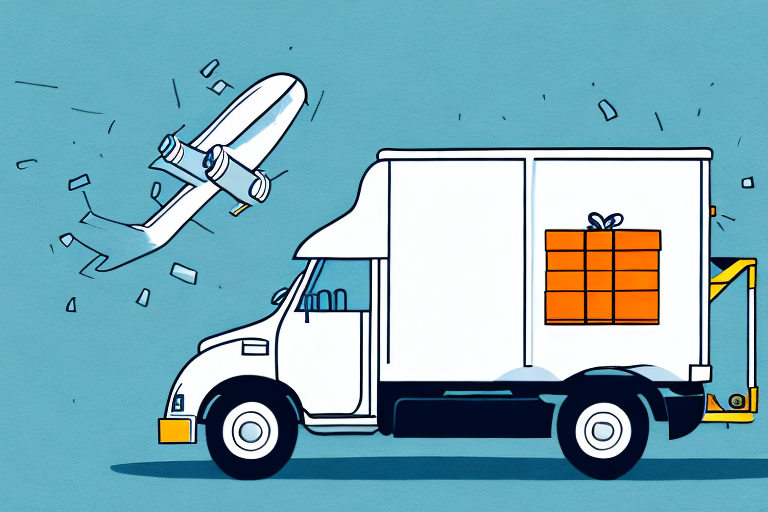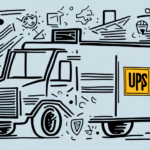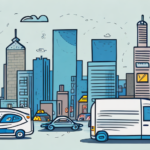Introduction to On-Demand Delivery Software
With the exponential growth of e-commerce and the increasing expectations of consumers for swift and reliable delivery services, businesses are increasingly adopting on-demand delivery software to meet these demands. On-demand delivery software is a technology-driven solution that enables businesses to manage and optimize their delivery operations in real-time. In 2023, the global on-demand delivery market was valued at approximately $XXX billion, highlighting its significance in the modern business landscape (Source).
Streamlining Operations and Boosting Efficiency
Automated Driver Assignment
One of the primary benefits of on-demand delivery software is the automation of driver assignments. By leveraging intelligent algorithms, the software can assign drivers to delivery routes based on factors such as location, traffic conditions, and driver availability. This reduces the need for a large dispatch team, leading to significant time and cost savings.
Real-Time Tracking and Route Optimization
Real-time tracking allows businesses to monitor the progress of each delivery, ensuring timely updates and efficient route management. Advanced route optimization algorithms analyze current traffic data and other variables to determine the most efficient paths, thereby reducing delivery times and fuel consumption. Studies show that optimized routing can decrease delivery times by up to 25% and reduce fuel costs by approximately 15% (ShipScience Efficiency Report).
Cost-Saving Advantages
Labor Costs
By automating the dispatching process and reducing the dependency on a large dispatch team, businesses can significantly lower their labor costs. Additionally, the streamlined operations minimize overtime and reduce the likelihood of human error, further contributing to cost savings.
Fuel and Vehicle Maintenance
Efficient route planning not only saves time but also reduces fuel consumption and wear and tear on delivery vehicles. According to industry data, businesses can achieve up to a 20% reduction in fuel costs and extend the lifespan of their vehicle fleet by implementing effective route optimization strategies.
Real-Time Tracking and Enhancing Customer Experience
Accurate Delivery Estimates
Providing customers with precise delivery estimates enhances trust and satisfaction. On-demand delivery software calculates realistic delivery windows based on real-time data, ensuring that customers receive their orders on time. This transparency is crucial for building long-term customer loyalty.
Flexible Delivery Options
Offering flexible delivery options, such as same-day or next-day delivery, caters to the diverse needs of customers. This flexibility not only improves customer satisfaction but also attracts a broader customer base. According to a 2023 customer survey, 68% of consumers prefer businesses that offer flexible delivery schedules.
Integration and Choosing the Right Software
Seamless Integration with Existing Systems
For on-demand delivery software to be effective, it must integrate seamlessly with existing business systems such as order management, inventory control, and CRM platforms. This integration ensures a cohesive workflow, reduces manual data entry, and minimizes the risk of errors.
Customer Support and Scalability
Choosing software that offers robust customer support is essential for addressing any technical issues promptly. Additionally, the software should be scalable to accommodate business growth, allowing for the addition of new features and increased delivery volumes without significant disruptions.
Case Studies of Successful Implementations
Numerous businesses have reaped significant benefits from implementing on-demand delivery software. For instance, Company A reduced their delivery times by 20% and saved over $100,000 in labor costs within the first year of implementation. Similarly, Company B experienced a 35% increase in revenue due to improved delivery efficiency and enhanced customer satisfaction (Read more case studies).
Future Trends in On-Demand Delivery Software
The future of on-demand delivery software is poised for significant advancements with the integration of artificial intelligence and machine learning. These technologies will further enhance route optimization, predict delivery times with greater accuracy, and improve overall operational efficiency. Additionally, the adoption of autonomous vehicles and drones is expected to revolutionize last-mile delivery, making it faster and more cost-effective.
Another emerging trend is the focus on sustainability. Businesses are increasingly seeking eco-friendly delivery solutions, such as electric vehicles and green packaging materials, to minimize their environmental impact. This shift not only aligns with consumer preferences but also contributes to corporate social responsibility initiatives.
Conclusion
On-demand delivery software is a pivotal tool for businesses aiming to thrive in the competitive e-commerce landscape. By streamlining operations, reducing costs, enhancing customer experience, and staying ahead of technological trends, businesses can achieve substantial growth and maintain a competitive edge. As the demand for fast and reliable delivery services continues to escalate, investing in the right on-demand delivery software will be instrumental in driving long-term success.
Moreover, the data and insights provided by on-demand delivery software empower businesses to make informed decisions, optimize their supply chain, and continuously improve their delivery processes. Embracing these technological advancements is not just an option but a necessity for businesses striving to meet the evolving needs of their customers in 2023 and beyond.




















